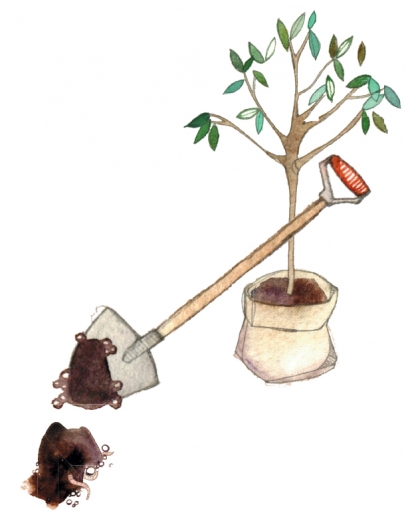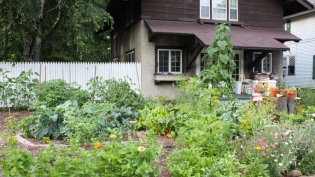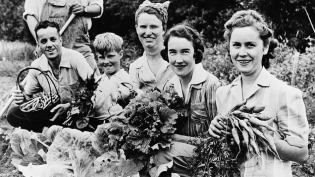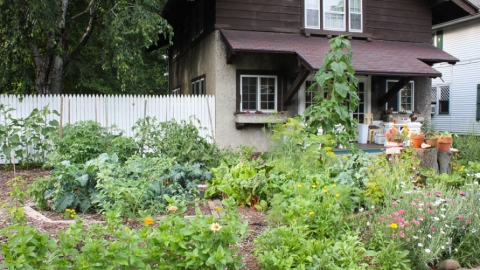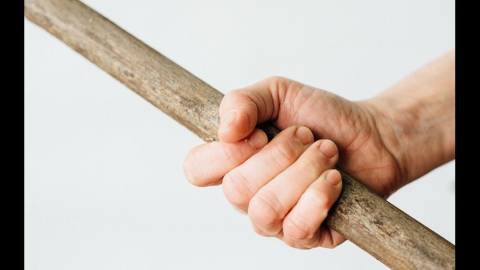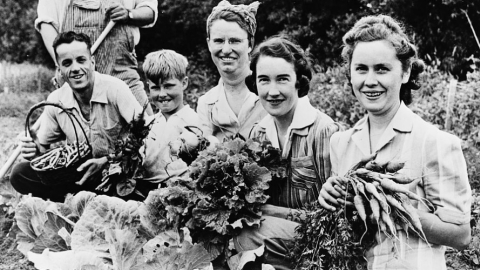Putting the Beds to Bed
Each spring I promise myself that I will put my garden to bed properly in the fall, but most years I break that promise—the snow always comes too soon!
This year, to keep myself organized, I’ve made a list of autumn garden tasks. If this seems like a lot of work, just remember that putting the beds to bed now will mean a happier, healthier garden in the spring!
CLEAN UP
• Remove flowers with foliage that has begun to brown or shrivel. Cut back the dry stems of perennials. This reduces the opportunities for pests and fungi to remain over the winter. Some plants may offer visual interest over the winter, such as grasses or plants with interesting pods. You can leave these if you choose.
• Don’t prune woody plants, trees and shrubs until they are dormant. You can cut diseased limbs from evergreens and shrubs.
• Pull dead or declining annuals.
• Harvest everything above the ground in vegetable gardens and under fruit trees to avoid attracting rodents and insects.
• Clear out overgrown areas. In sloping areas, you may want to leave dead stems to protect the slope from erosion.
• Empty, clean and disinfect your containers.
• Bring in stakes, cages and garden ornaments so that they aren’t damaged by frost and moisture.
• Clean and sharpen tools. Remove all soil, sharpen the edges with a file and wipe them down with light oil.
• Drain the tanks of your mower and other power equipment.
• Empty your garden hose and hang it up in the garage or roll it up and put it away.
COVER UP
• Mulch after the ground freezes with a six-inch layer of organic material. You can also mulch perennial beds with pine needles or chopped leaves to protect plant roots and soil. Mulch bulb beds with evergreen boughs to protect soil and plants from heaving and cracking.
• Protect young trees from animals such as deer, rabbits and voles by wrapping the trunks in wire or other commercial products.
• Wrap or cover tender plants or move them to a more protected area.
PREPARE FOR SPRING
• Weed! This will save you time in the spring.
• Mark plants that you want to divide in the spring.
• Test your soil for pH and add amendments.
• Prepare your soil with compost and manure. The winter freezing and thawing will help to work them into the soil for you.
• Till the soil to expose insects. You will disturb their dormancy and provide a delicious meal for hungry birds.
• Start a compost pile. Cover the pile with a layer of plastic or straw before the snow falls.
• Shred or mulch your leaves—they are free fertilizer.
PLANT NOW
• Trees and shrubs (until the soil freezes). Keep in mind that if you plan to buy a live evergreen tree for the holidays, you’ll want to dig the hole where you will plant it before the ground freezes. You can store the removed soil in the basement so it doesn’t freeze. Be sure to cover the hole and mark it so you can find it in the snow when you want to plant the tree after the holiday.
• Grass
• Flowering bulbs
• Rhubarb (The illustration shows a rhubarb crown that’s just sprouting.)
• Garlic
WATER
• Water perennials and flowering shrubs well in the fall. They will thank you for that all winter and show their appreciation in the spring!


